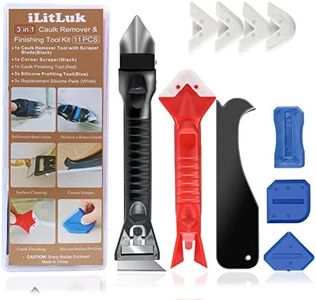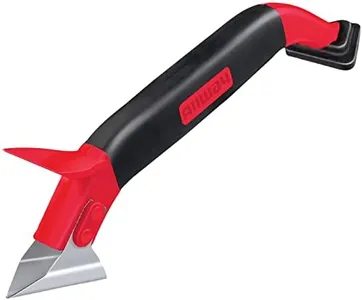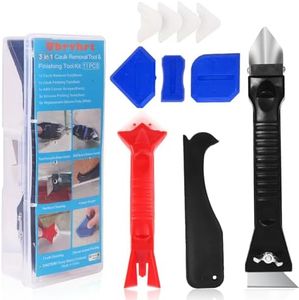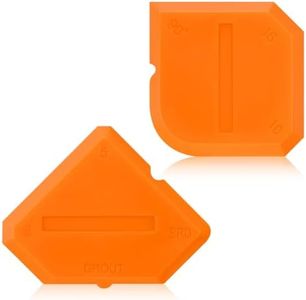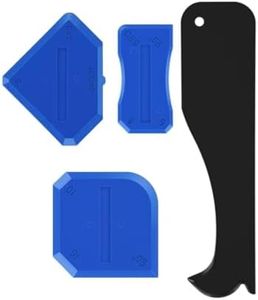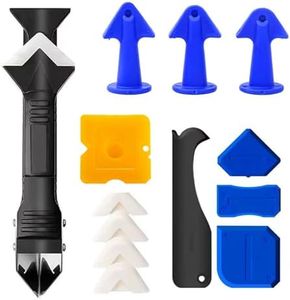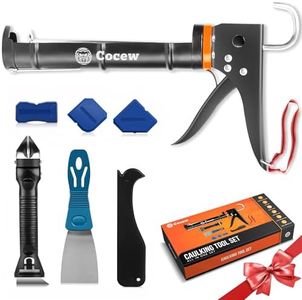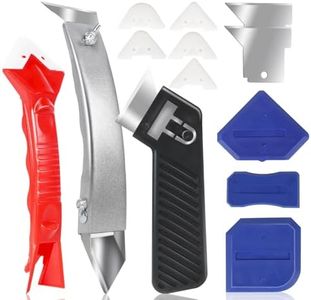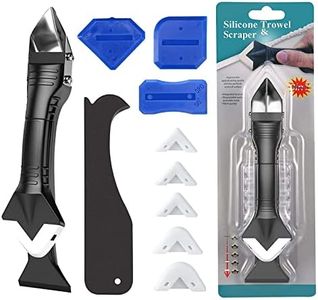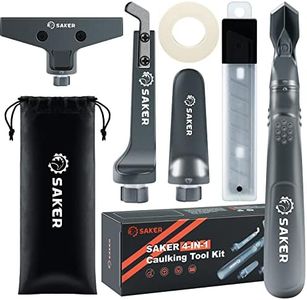We Use CookiesWe use cookies to enhance the security, performance,
functionality and for analytical and promotional activities. By continuing to browse this site you
are agreeing to our privacy policy
10 Best Caulk Remover
From leading brands and best sellers available on the web.Buying Guide for the Best Caulk Remover
Choosing the right caulk remover can make your project much easier, whether you're refreshing a bathroom, updating your kitchen, or tackling weathered exterior seals. Caulk removers are designed to soften and help remove old, dried caulk, making it less of a chore and reducing the risk of damaging surrounding surfaces. By understanding a few key features, you can select the one that matches your project needs and surface type.Type (Chemical vs. Mechanical)Caulk removers can be broadly categorized into chemical and mechanical types. Chemical removers use a formulated solution to break down caulk, making it soft and easier to scrape away, while mechanical removers are usually hand tools designed to physically pry and scrape caulk off. Chemical removers work best for flexibility and minimal surface damage, especially in tight or sensitive areas, whereas mechanical tools are effective on stubborn or thick caulk but may require more effort and could risk scratching certain surfaces. Your choice depends on whether you prefer a less labor-intensive chemical solution or the direct approach of a tool.
Compatibility with Caulk TypesNot all caulk removers work effectively on every caulk type. Common caulk types include silicone, acrylic, latex, and polyurethane. Some removers are formulated specifically for silicone, which is usually harder to remove, while others are suitable for a broader range of materials. Carefully check if the remover is labeled as compatible with the caulk type you're dealing with. Choosing the right match ensures effective removal and prevents frustration or possible damage to surfaces.
Surface SafetySurface safety refers to how gentle (or harsh) a remover is on different materials like tiles, glass, painted surfaces, or fiberglass. Some chemical removers are strong and might discolor or damage delicate finishes, while others are formulated to be safe on most household surfaces. Pay close attention to product descriptions and warnings to ensure you're using one that won't harm the areas around your caulk, especially if you're working in a visible or sensitive area.
Ease of UseEase of use encompasses the application method, time needed for the remover to work, and the cleanup process. Some products come in easy-to-apply squeeze bottles or sprays and need only a short wait time, while others might require more steps or multiple applications. If you're new to caulk removal or want to save time, look for options noted for simple application and quick results. This can make the process smoother and less frustrating.
Odor and Ventilation NeedsChemical removers can vary in their strength of odor. Some have strong, lingering smells and require good ventilation during use, while others are low-odor and safer for enclosed spaces. If you're working in a small bathroom or poorly ventilated area, consider a product with a milder scent or one specially labeled as low-VOC (volatile organic chemicals) to enhance comfort and safety.
Tool Quality (if using mechanical remover)If you opt for a mechanical caulk remover, the quality of the tool matters. Look for sturdy construction, an ergonomic grip, and a design that can get into corners and tight seams without slipping. Some come with replaceable blades or multi-purpose tips, which allows for more flexibility and longer use. Picking a well-designed tool increases efficiency and makes the job easier on your hands.

